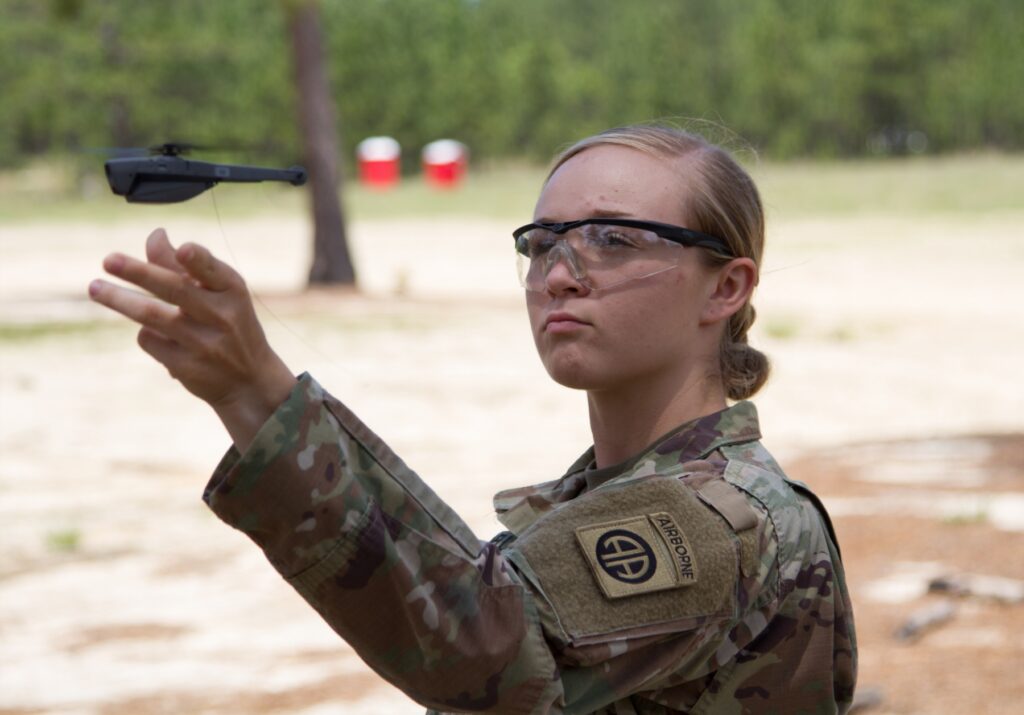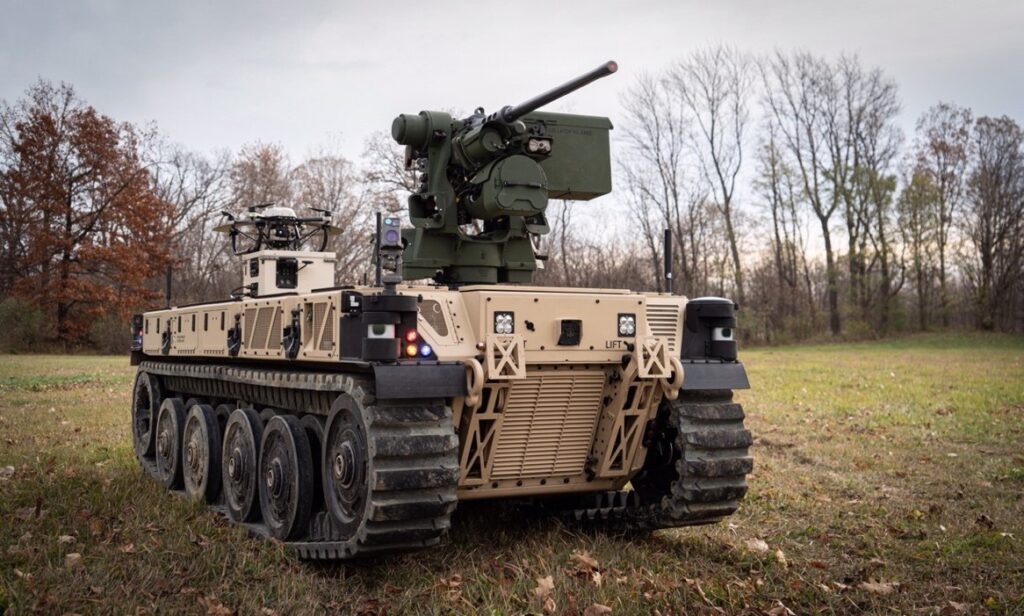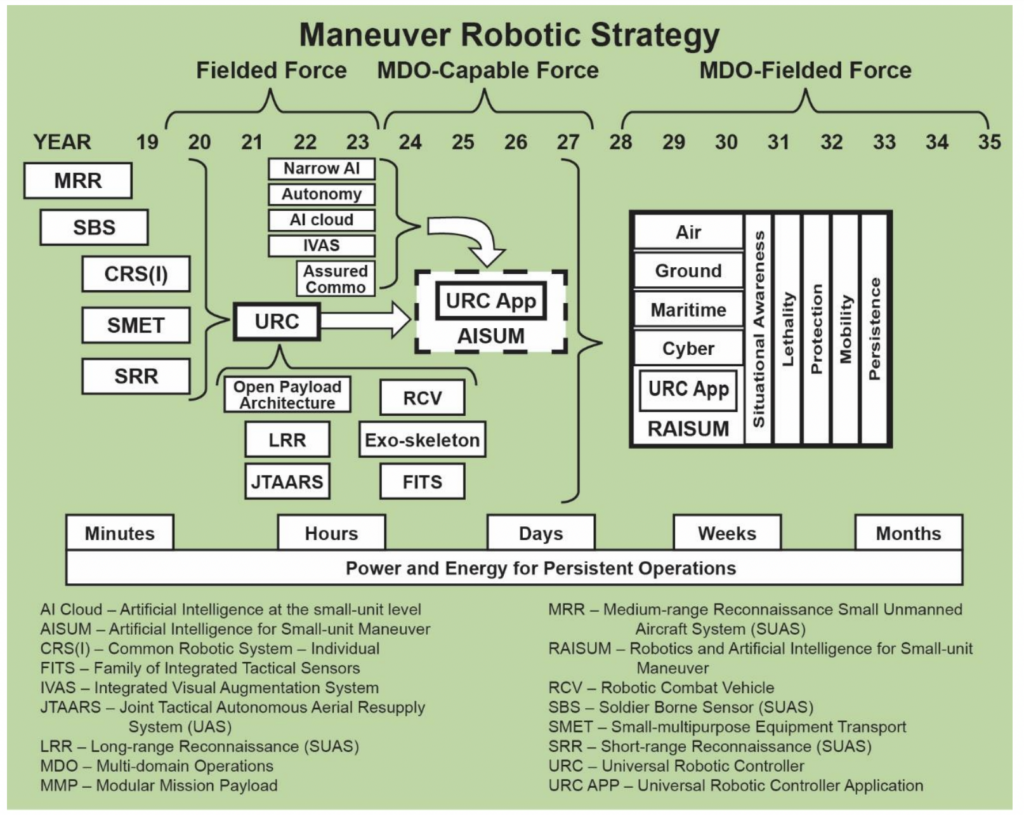By SYDNEY J. FREEDBERG JR.

WASHINGTON: How do you make a platoon of foot soldiers ten times more effective? If your company has a new technology that might help, Army Futures Command wants to know by May 5th.
That’s the deadline to submit ideas in AI, networking, and robotics for the Army’s “10x platoon” experiment, which is trying out tech to upgrade the future infantry force. The near-term goal is a series of field demonstrations next year at Fort Benning’s annual Maneuver Warfighter Conference and as part of Futures Command’s Project Convergence 2022 wargames. The ultimate goal, around 2028-2035? An infantry platoon that can see further, shoot further, and make better decisions 10 times faster than before, thanks to unmanned sensors, robots, networks, and AI systems that help share intelligence and advise commanders.
The original plan had been to do a demonstration last year, but that had to be cancelled amidst concerns over COVID and unspecified “funding issues,” said Ted Maciuba, deputy director of Futures Command’s Robotics Requirements Division, during Fort Benning’s online industry day on Wednesday.
Submissions are limited to members of the National Advanced Mobility Consortium (NAMC), which issued the formal Request for Prototype Proposals (RPP) on Tuesday. Going through public-private consortia this way is an increasingly common expedient for military projects that want bypass the traditional acquisition bureaucracy and tap non-government innovation quickly.
What kind of technologies does the 10x experiment want? “This is… open-ended,” Maciuba said. “Propose any technologies that you have that you feel are mature enough [and] will move us towards a 10x increase in effectiveness.”

Qinetiq’s Robotic Combat Vehicle – Light (RCV-L)
The Robotics Requirements division will pick tech to fund with an eye to impressing Army brass that further work – and further funding – is warranted. After May 5, Maciuba continued, “our selection processes [will] determine which of those technologies will demonstrate to the best degree possible for senior leaders that this is something that they need to start reallocating resources towards.”
Georgia Tech Research Institute will put together the chosen technologies into an integrated system of systems, intended to simplify their use and not overwhelm infantry soldiers with a welter of different controllers, interfaces, and manuals.
Today, soldiers have to learn a different set of controls for each unmanned system they operate. The Army aims to streamline the system by creating a common Universal Robotic Controller. URC will eventually operate all the unmanned vehicles used by a combat brigade, both aerial drones and ground robots – even armed Robotic Combat Vehicles now in development. (The URC won’t handle high-end drones that require the specialized skills of an Army aviator to operate).
The next step, Maciuba said, is to turn the URC from a physical gadget to an app. It will be one of many on a future open architecture system called AI for Small Unit Maneuver. AISUM will also have apps to collect intelligence data from all the platoon’s drones, curate it, and present it to the platoon’s leaders to help them make better decisions faster. The ultimate goal is an “AI cloud,” running off robot-carried mini-servers, that manages the robots’ movements moment-to-moment so the humans can focus on the bigger picture. Just like the lieutenant can order a squad to seize a hill and not worry about telling them the exact route to follow or cover to take, the lieutenant will order the AI cloud to scout out an area and not have to micromanage the individual robots executing that order.

The Army plans to consolidate disparate robotic systems, first onto a single Universal Robotic Controller (URC), then into an “AI cloud.”
“All too often,” the enemy in training scenarios is “two guys… with AK-47s and then another guy with an RPG,” Maj. Gen. Patrick Donahoe says. “That’s not the threat we need to be training our force against today.”
Basically, AI for Small Unit Maneuver would be a platoon-sized microcosm of the future Joint All-Domain Command & Control system networking the entire military. While JADC2 would link the Army, Navy, Marines, Air Force, and Space Force across all five domains of land, sea, air, space, and cyberspace, AISUM would link Army systems across air and ground, manned and unmanned.
Maciuba says this problem can be solved. That’s in part because ever-shrinking computers let robots process sensor data onboard instead of having to live stream every bit of data over limited bandwidth for a human to decipher. And it’s in part due to the manageable scale of the infantry platoon.
“This is not a huge data problem; this is probably a medium-sized data problem,” he said. “You only need to be communicating, from the center of the manned formation, out perhaps five kilometers to the robotic systems that are out there are arrayed in a constellation around that that manned formation.”
No comments:
Post a Comment